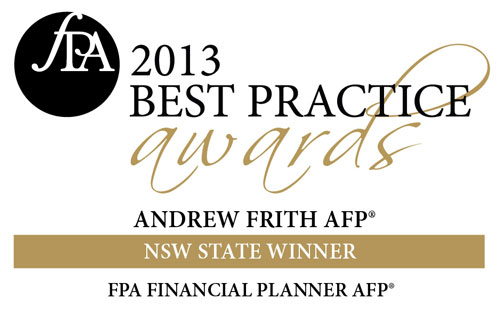A 2015 Supreme Court decision is both good news and a caution for contributions to super and SMSFs and bankruptcy.
A recent court decision demonstrates what can happen when a business borrows from a bank to make large super contributions to an SMSF, and then the business folds.
The Court of Appeal division of the Victorian Supreme Court handed down the decision of Australasian Annuities Pty Ltd [2015] VSCA 9 (‘AA 2015’) this year. In addressing one of the lines of argument, the case suggests that the SMSF was entitled to keep the money. However, the other line of argument involved the application of a well-established rule, which meant that the bank was entitled to its money back.
The facts
Australasian Annuities Pty Ltd (‘AA’) carried on a financial planning business. More specifically, AA acted as trustee of a family trust, and in that capacity acted as a service entity, providing management, administration, accommodation and staffing services to another entity, which held the relevant financial services licence and received financial planning client commissions and the like.
On 7 May 2007 a facility with a limit of $2.5 million was signed with Macquarie Bank. Security for the loan included a registered first ranking fixed and floating charge over the whole of the assets and undertakings of AA.
Ten days later Macquarie Bank advanced $2.5 million to AA pursuant to the facility.
The sole director of AA had an SMSF along with his wife and sons. A significant portion of the $2.5 million was contributed to the SMSF.
The fortunes of AA appear to have waned and on 29 June 2009 receivers and managers were appointed in respect of AA. The receivers and managers were appointed by Macquarie Bank under securities conferred on the bank securing the advance made by Macquarie Bank to AA.
The receivers and managers of AA brought a claim in AA’s name against both the SMSF trustee and the financial planner who was the sole director of AA, aiming to recover at least some of the $2.5 million. As the financial planner had since been declared bankrupt, the claim only proceeded against the SMSF trustee.
AA’s first case to recover money failed before the Supreme Court in Australasian Annuities Pty Ltd [2013] VSC 543. AA 2015 was the result of AA’s appeal, which was based on two main arguments.
The argument that the SMSF was a ‘volunteer’
The receivers and managers of AA attempted to claw back money on the basis that the trustee of the SMSF received money ‘as a volunteer’. In simplified terms, this was an argument that the money should be returned because the trustee of the SMSF had given nothing in return for the money and therefore should be forced to make restitution by paying back the money.
In a welcome result for SMSFs, the majority held that the trustee of the SMSF did in fact provide valuable consideration in exchange for the contributions, and therefore this aspect of AA’s argument failed. In an earlier High Court decision of Cook v Benson [2003] HCA 36, the High Court had previously held that superannuation funds provide consideration in exchange for contributions. In that case, the parties had dealt at arm’s length. The majority in AA 2015 essentially followed the High Court’s reasoning.
The case illuminates that the valuable consideration given by an SMSF trustee in exchange for contributions are the obligations of the SMSF trustee to provide beneficiaries with the rights and benefits under the rules of the fund. These rights and obligations include that an SMSF trustee must:
• administer contributions in accordance with the terms in the deed;
• keep and provide records and accounts to members;
• credit contributions to the appropriate accumulation account;
• effect policies with an insurer;
• invest money in accordance with the investment strategies of the fund; and
• give members certain entitlements to death and retirement benefits.
Had the failed ‘volunteer’ argument been AA’s only argument, it appears AA would have been overall unsuccessful. AA did however have another argument.
The argument based on ‘knowing receipt’
AA also argued that the SMSF was liable to return money because of the principle of ‘knowing receipt’. The essence of AA’s argument was that the SMSF must return money because the following two elements had been satisfied:
• element 1: the SMSF received property (money) that had been misapplied or transferred pursuant to a breach of fiduciary duty or trust; and
• element 2: the SMSF received that property with knowledge that it had been misapplied or transferred pursuant to a breach of fiduciary duty or trust.
It was not controversial that the sole director of AA was subject to fiduciary obligations. In addressing the first element, the sole director of AA was unanimously held to have breached his fiduciary duties in borrowing money, mainly for the benefit of himself and his wife. The Court found that the financial planner (ie, the then sole director of AA) facilitated the distribution of the money to his SMSF to benefit himself and certain family members as though the money was his to do with as he pleased. The Supreme Court noted that the interests of AA (the company) were not necessarily the same as the interests of the shareholders (who were the financial planner and his wife). Also, AA acted as trustee of a family trust. Although the financial planner and his wife were beneficiaries of the trust, there were many other beneficiaries including various other family members and corporate entities. Naturally, such a wide class of beneficiaries is very common in family trusts. Accordingly, the money that the SMSF
received was transferred pursuant to a breach of fiduciary duty.
The second element that AA needed to prove was that the trustee of the SMSF had knowledge that the money was received in breach of fiduciary duties. The trustee of the SMSF had four directors, of which the financial planner was only one. As the financial planner was the most active director, the Court was required to decide whether he was the ‘directing mind and will’ of the trustee of the SMSF. The majority decided that because the financial planner was the only active or knowledgeable director, was instrumental in the relevant transactions and directed and oversaw each of the payments to the SMSF, he was the directing mind and will of the SMSF trustee. Accordingly, his knowledge was imputed to the SMSF. The SMSF was therefore held by the majority to have had knowledge (through the mind of the financial planner) that the money was received in breach of fiduciary duty.
The result of the above was that the trustee of the SMSF was liable to pay back money to the receivers and managers of AA.
Conclusion
AA 2015 reinforces that an SMSF does give real consideration in return for contributions. This is important for defeating certain claims that attempt to claw back amounts that have been contributed.
However, the case should also act as a caution to directors, trustees and their advisers that complex legal structures come with attached obligations that can be the undoing of the parties.
By David Oon, Lawyer and Bryce Figot, Director, DBA Lawyers
This article is for general information only and should not be relied upon without first seeking advice from an appropriately qualified professional.
Call (02) 4926 2300 or email us.
If you wish to speak to our expert team about SMSFs and bankruptcy please do not hesitate to contact us here at Leenane Templeton.









